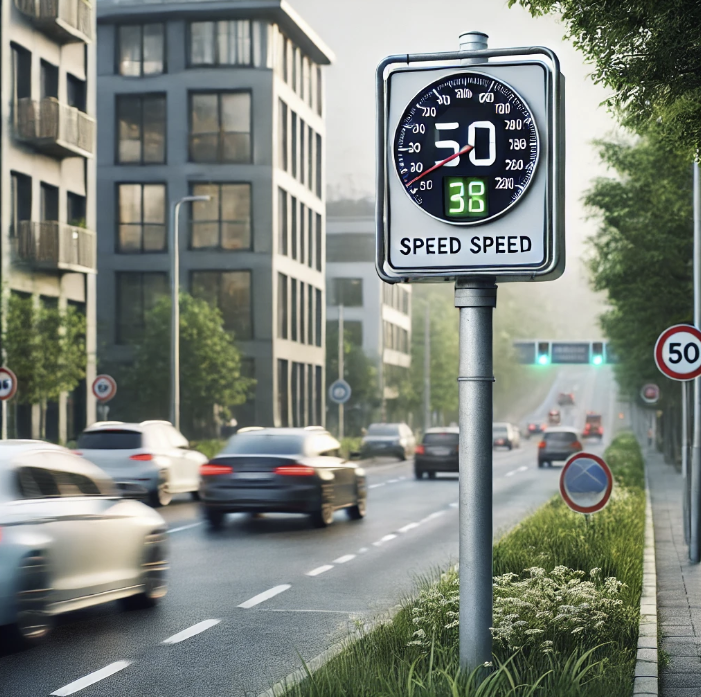High-Risk Traffic Areas: How to Avoid High-Infraction Zones in Belgium
Road safety is a major concern in Belgium, where certain traffic zones are particularly monitored due to their high danger or the number of infractions recorded. Fixed speed cameras, mobile speed controls, and automated surveillance systems are regularly installed in these so-called “high-risk areas.” Here’s an overview of the high-risk zones in Belgium and some practical tips for safe driving, avoiding fines, and enhancing road safety.
1. High-Risk Zones: Where Are the “Points Noirs” in Belgium?
Belgian authorities regularly identify high-risk zones where controls are strengthened to prevent accidents and deter infractions. These zones are often located:
- On main roads and highways: Certain Belgian highways, such as the E411, E40, and E19, are heavily monitored due to frequent speeding, reckless driving, and heavy traffic.
- Near cities and villages: The vehicle density and presence of pedestrians in urban zones increase the risk of accidents. This is true for some parts of the N4 (linking Brussels to Namur) or the N90 near Liège.
- At dangerous intersections: Intersections, especially those with frequent light changes, are often the sites of numerous incidents. In Brussels, for example, intersections around Boulevard du Midi are frequently monitored.
- Near schools and residential areas: To protect vulnerable users, speed cameras and speed controls are common near schools and residential neighborhoods.
2. Fixed and Mobile Radars: Where Are They Installed?
Fixed Radars
In Belgium, fixed speed cameras are permanently installed on specific routes. These cameras generally monitor speed, and some detect red-light violations. Commonly monitored locations include:
- Brussels: Boulevard Lambermont, Avenue Louise, and the Inner Ring Road.
- Flanders: The E40 highway between Ghent and Brussels is one of the most monitored sections.
- Wallonia: On the N4 between Namur and Arlon, many cameras are located near towns along the route.
Mobile Radars
Mobile radars are temporarily deployed by authorities and regularly change locations, often in high-traffic zones. They can be found on highways and main roads, but also in specific high-risk areas, such as construction zones or near major events.
Automated Control Zones
Belgium has set up automated control zones that monitor average speed over several kilometers, known as “speed sections.” These speed sections are particularly frequent on highways like the E40 and E19.
3. Tips for Safe Driving in High-Risk Zones
Avoiding fines and risks in high-risk zones requires good preparation and cautious driving. Here are some tips to limit the chances of infractions and accidents in these areas:
- Anticipate high-risk zones: With certain navigation apps, it is possible to locate fixed cameras and speed sections. Staying informed allows you to anticipate slowdowns and adhere to speed limits.
- Adjust your speed: In urban zones, near schools, and in residential areas, it’s essential to respect the 30 or 50 km/h limit, even outside of peak hours. In Belgium, controls in these areas are increasingly frequent, with heavier penalties for speeding near vulnerable users.
- Maintain a safe following distance: In dense zones like the outskirts of Brussels and Liège, accidents can occur from sudden braking or traffic jams. Keeping a safe distance helps to avoid chain collisions.
- Stay alert for signal changes: In some high-risk areas, signage may vary based on the time of day or ongoing construction. Staying vigilant enables you to respond to speed or lane changes without risking an infraction.
- Minimize distractions while driving: Using a phone is one of the most frequent and dangerous infractions, especially in high-risk areas with heavy traffic. Using hands-free mode or activating driving mode is highly recommended.
4. In Case of a Check or Infraction: What to Do?
If you are stopped in a high-risk area or receive a fine after passing through one:
- Don’t contest immediately: Take time to understand the nature of the infraction and review the details provided in the fine. If unsure, consulting a lawyer specializing in traffic law can be helpful.
- Observe contestation deadlines: If you decide to contest the infraction, do so within the deadlines specified on the ticket. Appeals may ultimately be reviewed by the police court, which will examine your case. Be cautious, however, as unfounded appeals could lead to a criminal record. Consulting a traffic law expert is advisable.
- Consider alternative settlements: For certain minor infractions, it is possible to pay a fixed fine, avoiding a court appearance.
Conclusion
Safe driving in Belgium’s high-risk zones requires heightened vigilance and strict adherence to traffic rules. By following these tips and being informed about high-risk areas, drivers can reduce the chances of infractions and contribute to improved road safety. For any questions, feel free to contact me in my capacity as a lawyer specializing in traffic law.




